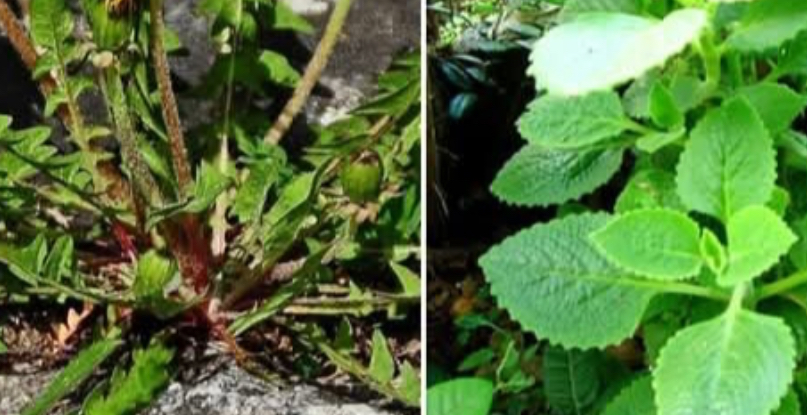Dandelion (Taraxacum officinale)Often seen as a pesky lawn weed, dandelion is actually a powerhouse for detox and digestion.
Benefits:Supports liver and kidney functionActs as a natural diureticHigh in antioxidants and vitamins A, C, and K
Use it in tea, salads, or as a liver tonic.2. Indian Borage (Coleus amboinicus / Lá húng chanh)Also known as Mexican mint, this plant is a go-to remedy for respiratory issues.
Benefits:Soothes sore throats and coughsActs as a natural expectorantReduces inflammation
Use fresh leaves in tea or steam inhalation.3. False Daisy (Eclipta prostrata / Cỏ mần trầu)This underrated herb is widely used in traditional medicine for hair health and liver protection.
Benefits:Promotes hair growth and prevents grayingSupports liver detoxificationReduces internal bleeding and inflammation
Use in herbal oil or as a tea.4. Plantain (Plantago major)Not the banana lookalike — this low-growing plant is packed with healing powers. Benefits:Heals cuts, wounds, and insect bitesSoothes digestive issuesReduces inflammation
Apply crushed leaves topically or make plantain tea.5. Chickweed (Stellaria media)A tiny ground cover plant with big health benefits.
Benefits:Natural skin healer for rashes, eczema, and itchingSupports weight lossCools internal inflammation
Use in poultices or salads.6. Shepherd’s Purse (Capsella bursa-pastoris)Named for its pouch-shaped seed pods, this weed helps stop bleeding. Benefits:Regulates heavy menstrual flowSpeeds wound healingMild diuretic and urinary tract support Consume as tea or tincture.7. Purslane (Portulaca oleracea)Often found growing between sidewalk cracks, this is a nutritional superfood. Benefits:Rich in omega-3 fatty acidsAnti-inflammatory and antioxidantHelps with skin, heart, and brain health
Eat raw in salads or blend into smoothies.8. Mugwort (Artemisia vulgaris)An ancient herb used for women’s health and digestive support.
Benefits:Relieves menstrual crampsEnhances digestionCalms the nervous system Burn as incense or drink as a tea.9. Wood Sorrel (Oxalis spp.)Often mistaken for clover, this tangy-tasting weed is rich in nutrients. Benefits:Natural source of vitamin CRefreshes the body during heat or feverSupports immune function
Add fresh to salads or use as a cooling tea.10. Nettle (Urtica dioica)Known for its sting, but once dried or cooked, it becomes a healing powerhouse. Benefits:Boosts iron and energyReduces joint pain and allergiesSupports kidney and prostate health
Make nettle soup, tea, or add to smoothies.
Why Are These Plants Overlooked?Many of these healing herbs are labeled “weeds” because they grow abundantly and freely — which means they can’t be patented or profited from. That’s why some believe the healing potential of these plants is often ignored in favor of expensive pharmaceutical alternatives.
A Word of CautionWhile these herbs are generally safe, always do your research and consult a qualified herbalist or doctor, especially if you are pregnant, nursing, or taking medications.
Take Action: Start Using These Healing Plants TodayLook around your garden or local parkIdentify these plants using a field guide or plant ID appStart incorporating them into teas, salves, or mealsYour next powerful remedy might be hiding under your feet.







